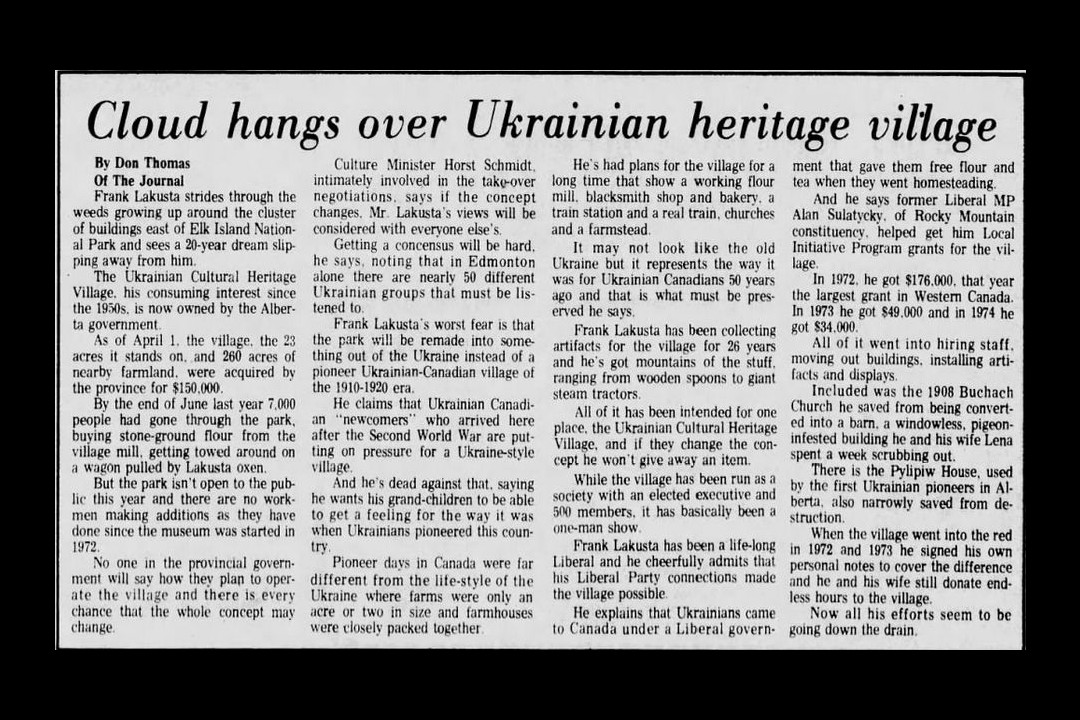On this day in 1975, the still-young Ukrainian Cultural Heritage Village faced an uncertain future.
Today, Edmonton is home to one of the world's largest Ukrainian populations living outside of Ukraine; nearly 145,000 residents identified some sort of Ukrainian heritage in 2006, the most anywhere in Canada.
But when the first Ukrainian immigrants came to Edmonton in the late 1800s, few of them stayed. This was a couple of decades after the federal government bought Rupert's Land from a reluctant Hudson's Bay Company. The Government of Canada had a quarter of the continent on its hands, and it offered free land to entice European settlers to live there (ignoring the fact that people had already been living there for thousands of years.)
The Ukrainian immigrants that passed through Edmonton were mainly on their way to eastern Alberta. Many of them headed to the Edna-Star colony, Canada's oldest and largest block settlement for Ukrainian homesteaders. It wasn't until 1905 — after Edmonton was better connected to the rest of the country by railroad — that the city saw the first real wave of newcomers looking to stay in the city. While some still moved to farms to the east and south, many worked in the city's growing industrial base or opened small businesses.
A small log church was built in 1904 to serve the Ukrainian Greek Catholic community. It would eventually become Saint Josaphat Ukrainian Catholic Cathedral, which moved to its current, impressive McCauley building in the 1940s.
One of the city's first bookstores — aptly named the Ukrainian Bookstore — opened in the Koermann Block in 1914 and specialized in selling newspapers, books, and other literature from Ukraine to the growing community. While the original building still stands on the corner of 96 Street and 102A Avenue, a reconstruction of the bookstore was also made in Fort Edmonton Park.
In 1971, the Ukrainian Cultural Heritage Village Society was founded to commemorate the history of the Ukrainian settlement in eastern Alberta. Using government grants and donations, the organization bought a patch of land east of Edmonton and began relocating and preserving historic buildings from across the province. The Alberta government took over the site in 1975, prompting worries that the site would lose its focus on Ukrainian-Canadian history.
However, the heritage village has only grown since the change in ownership. It now contains nearly 40 buildings from towns and hamlets across eastern Alberta. The staff of the open-air museum remain in character, guiding visitors through the history of Alberta's Ukrainian settlement up until the 1930s.
Edmonton's Ukrainian population continued to grow past the 1930s, with more waves of immigration surrounding World War II and in the 1980s. In recent years, Edmonton has seen another influx, with many newcomers arriving following the Russian invasion of Ukraine. And despite its uncertain early years, the Ukrainian Cultural Heritage Village remains part of Edmonton's cultural world, with several special events planned over the summer.

